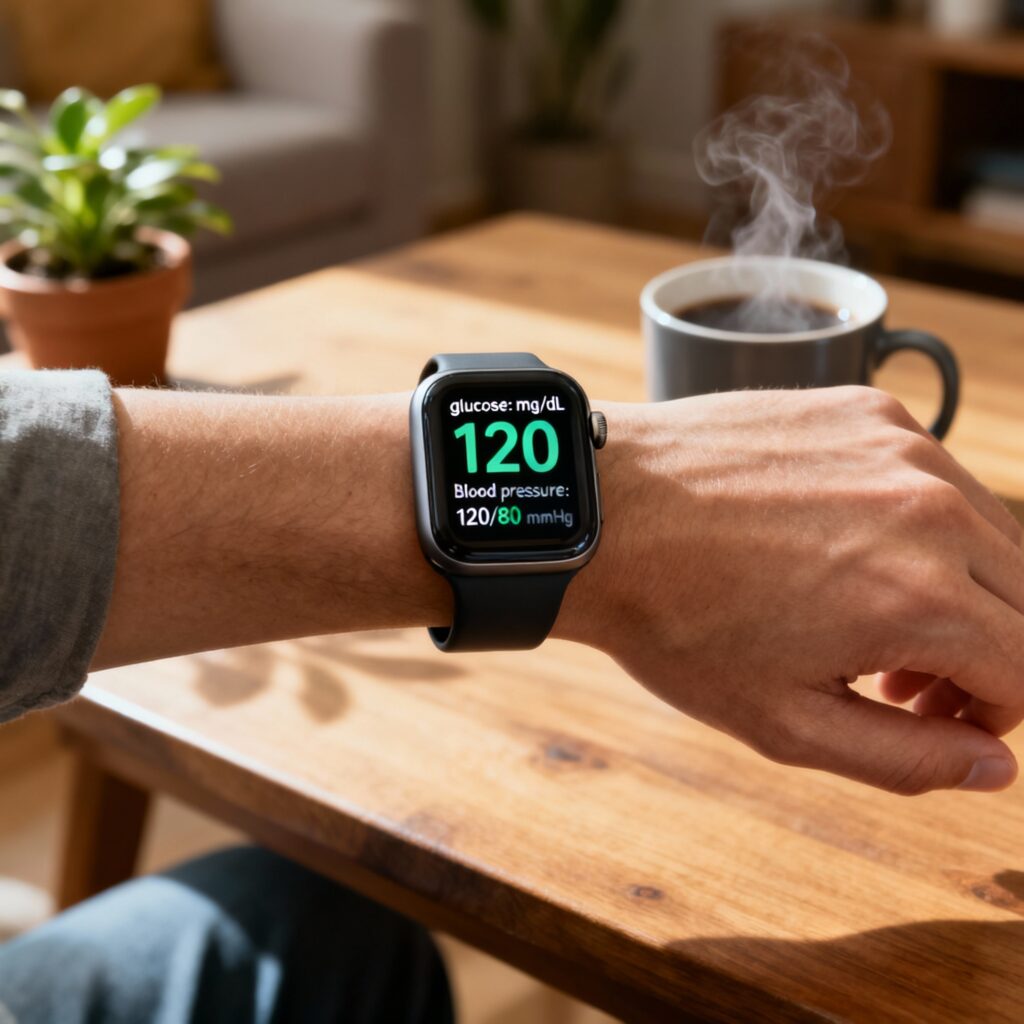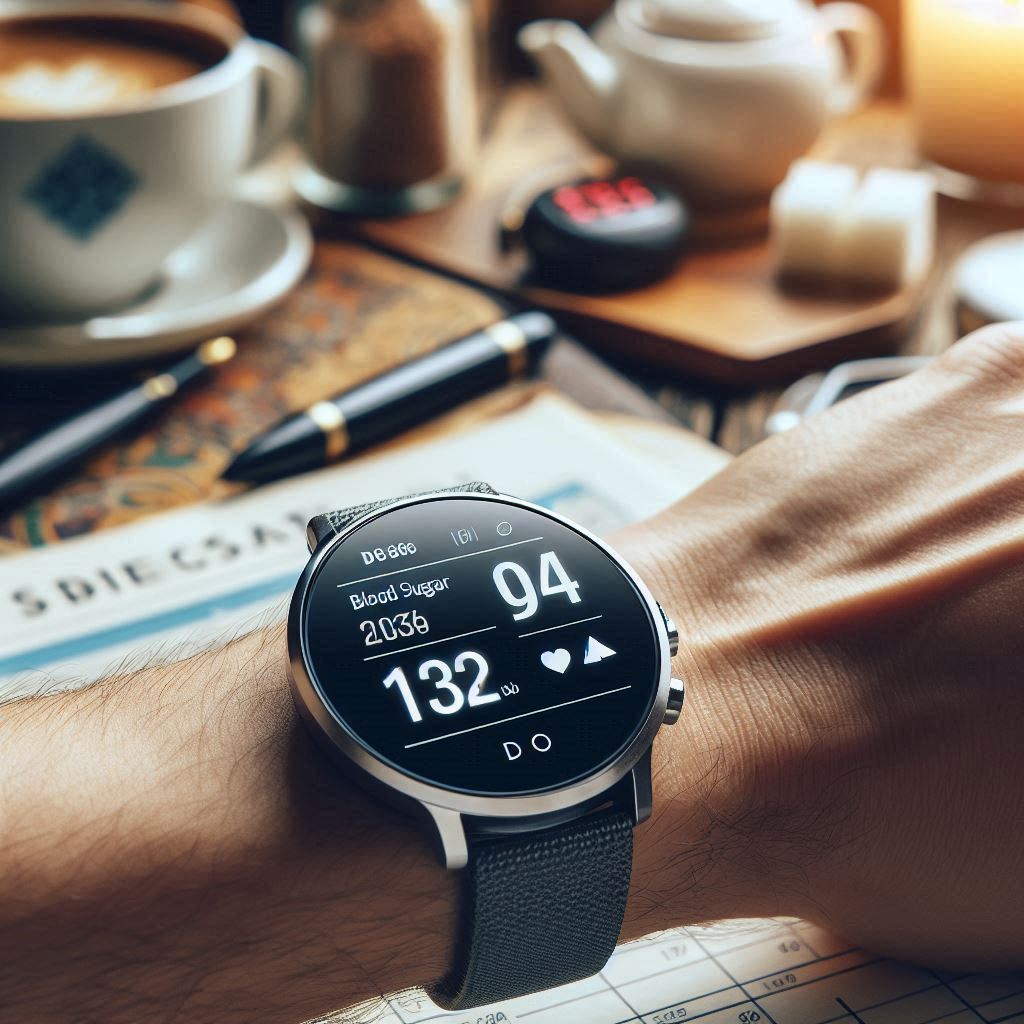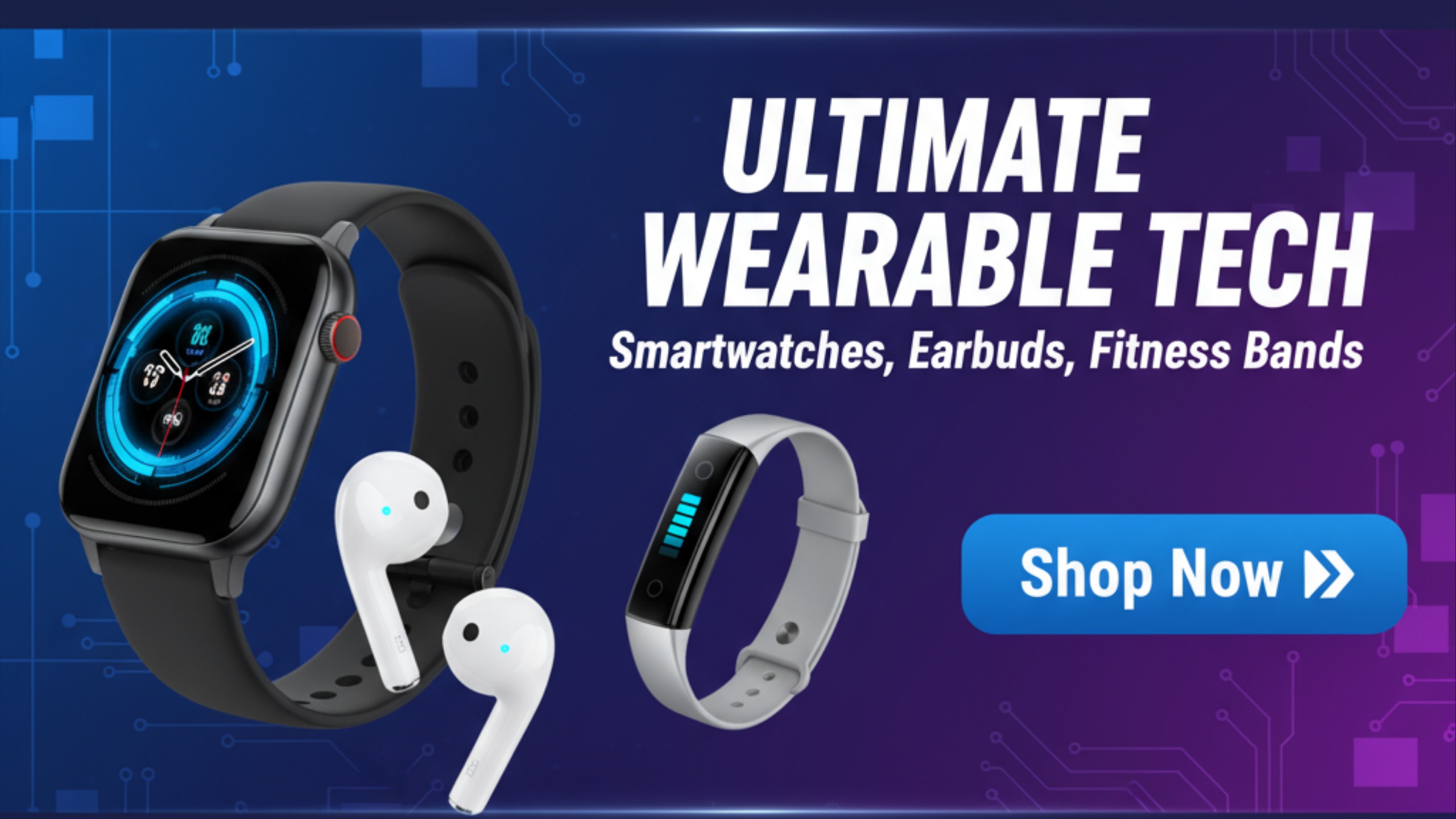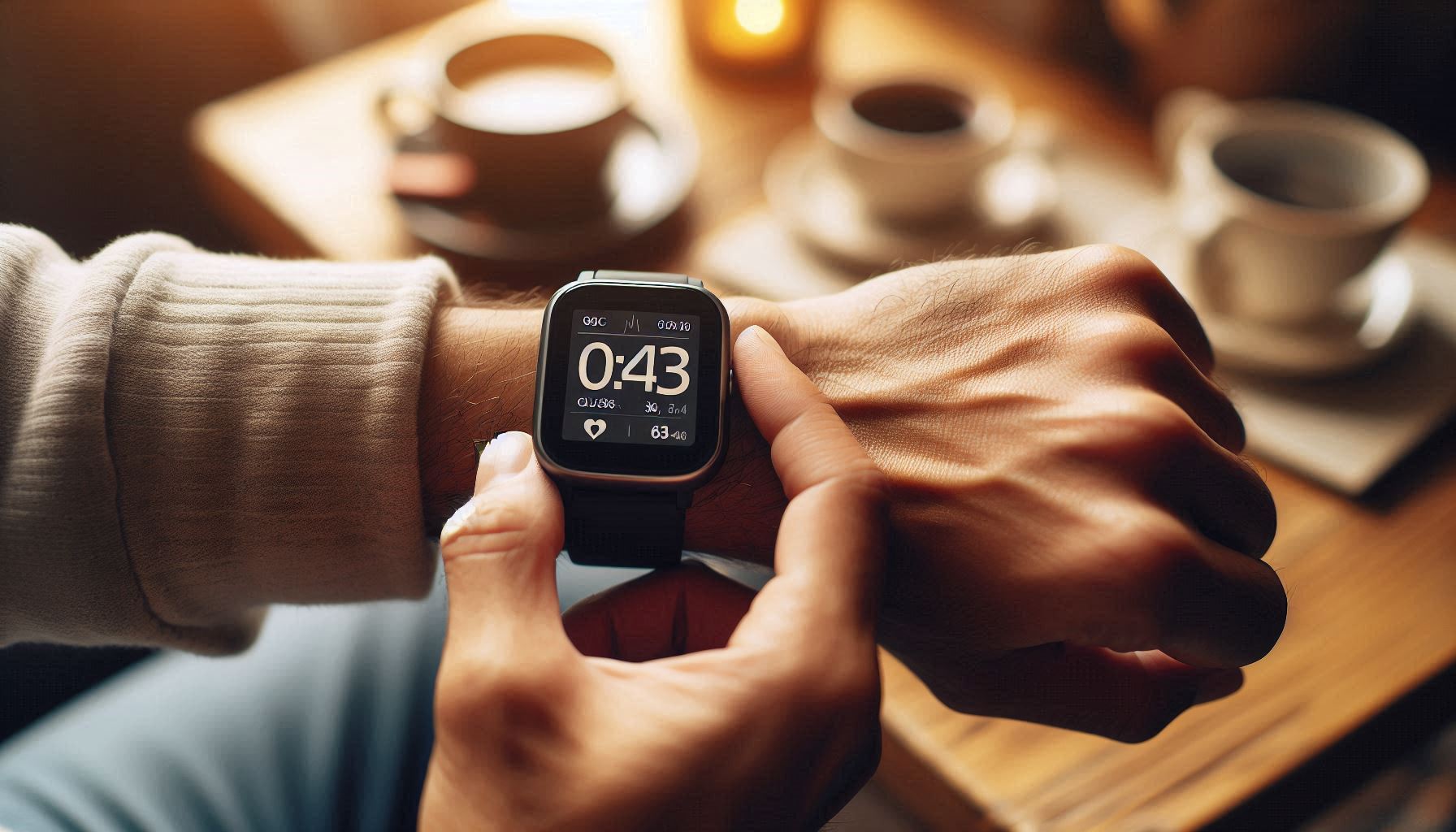You know how tricky managing diabetes can be, right? One day your blood sugar’s coasting fine, and the next it’s bouncing off the walls for no reason. That’s where the new wave of tech savvy wearables steps in. Modern smart watches for diabetes aren’t just counting your steps anymore they’re tiny, wrist‑bound lifesavers that quietly keep tabs on what’s happening inside your body, especially your glucose levels.
Let’s dive into how these little gadgets are changing the daily grind of blood sugar management, one buzz at a time.

Why a Smart Watch for Diabetes Is a Daily Game Changer
Let’s be honest tracking your health ain’t always fun. Pricking your finger multiple times a day feels like living in a pin‑cushion nightmare. But with a smart watch for diabetes, that’s finally starting to change. These watches pull off something pretty mind‑blowing: they let you track blood sugar non‑invasively. No lancets, no tiny test strips scattered around your kitchen counter.
Brands like Aptofit TrackPro, Garmin, and FitVII GT5 Pro Max are leading the way with light‑based sensor tech that reads your glucose trends beneath the skin using near‑infrared light instead of needles. The result? Real time glimpses into how meals, stress, or workouts affect you. You can see patterns shaping up right on your wrist, before those sugar swings knock you off balance.
And you know what’s even better? The awareness. That buzz on your wrist isn’t just a gadget doing its job it’s a reminder that you’re in control, not the other way around.
How Smart Watches Accurately Track Blood Sugar Levels
Okay, so how does a smartwatch with blood sugar monitor actually pull this off? Here’s where science gets snazzy. Most devices use optical sensors that shine light often infrared or multiple wavelengths into your skin. The reflected light changes depending on the concentration of glucose molecules in your blood.
It sounds like sci‑fi, but it’s backed by solid research. Garmin’s new patent even mentions measuring glycated hemoglobin (HbA1c) on the wrist to track long‑term glucose stability not just your moment‑to‑moment spikes.
Meanwhile, devices like the Aptofit TrackPro go full futuristic, combining glucose readings with data like heart rate, SpO₂, and stress levels in one interface. It’s like having a whole mini medical lab strapped to your wrist, minus the sterile smell.
But here’s the catch it’s not meant to replace your medical device or doctor’s lab results entirely. Think of it as your personal scout: spotting the trends, alerting you to dips, and helping you make smarter calls before things go haywire.
Monitoring Both Blood Sugar and Blood Pressure: Benefits and Features
You ever get those days when your blood pressure joins the blood sugar rollercoaster? Yeah, it’s a double headache. That’s why a smart watch for blood pressure and blood sugar can be a lifesaver. The new generation of smartwatches tracks both, side‑by‑side, giving you the full picture of how your body’s handling stress, activity, and food.

Here’s what you get in one neat package:
Simultaneous blood sugar + pressure tracking
The numbers sync up, helping you see how cardiovascular strain might affect glucose.Sleep and SpO₂ tracking
Because bad sleep messes with insulin sensitivity, and oxygen levels matter more than you think.Heart rate variability (HRV)
A sneaky indicator of stress essential if emotional ups and downs tend to send your readings flying.Bluetooth call + app sync
Because nobody wants to fumble with multiple devices at 7 a.m.
Devices like the FitVII GT5 Pro Max pack all this into one polished dashboard. And just when you thought wearables had maxed out on cool features… they’re now exploring non‑invasive uric acid and lipid tracking too. Wild, right?
Real Experiences Using Smart Watches to Manage Diabetes
Let’s get real. Technology’s great and all, but what’s it really like day‑to‑day?
One user wrote about her Aptofit TrackPro literally saving her from a late‑night hypo alert the watch buzzed her awake when her glucose dropped fast post‑dinner. Another said he loves how it “keeps him honest” about snacking between meals, because now his smartwatch tattles on him through trend graphs.
And psychologists are even finding unexpected benefits. Recent studies revealed that over 80% of people with diabetes using wearables felt more confident managing their condition and kept up medication routines better. Sure, some complained about the learning curve or app syncing headaches, but most agreed: once you get the hang of it, it feels like your body’s whispering its secrets straight to your wrist.
These watches don’t just collect data they build awareness, empathy, even accountability. It’s tech that cares, in its own quiet little way.
Tips for Choosing the Best Smart Watch with Blood Sugar Monitor
Alright, so you’ve decided to snag one but which smart watch to track blood sugar actually makes sense for you? There’s no magic one‑size‑fits‑all answer, but here’s a quick cheat sheet from real users and tech testers:
- Check accuracy, not hype. Look for models that are FDA‑cleared or paired with certified continuous glucose monitoring (CGM) systems like Dexcom.
- Sync with your phone and healthcare app. Integration with Apple Health, Garmin Connect, or Fitbit’s platform makes a world of difference for sharing readings with your doctor.
- Prioritize comfort. Sounds trivial, but you’ll be wearing it 24/7. A breathable strap beats fancy leather any day.
- Watch the battery life. Most blood sugar tracking watches run heavy sensors that drain power aim for something that lasts 4–7 days on one charge.
- Mind your budget. Let’s be honest, some wearables cost more than rent. Thankfully, solid mid‑range options like FitVII or Kronus offer core metrics without breaking the bank.
And here’s a pro tip: don’t get too obsessed with perfect numbers. Trends matter more than daily dips. The watch helps you see patterns so talk to your doc whenever something looks off.
The Human Side of It All
Between chasing glucose spikes and juggling medication, living with diabetes sometimes feels like running a marathon you never signed up for. So when a smart watch that monitors blood sugar lets you breathe a little easier, it’s not just about convenience it’s dignity.
It’s being able to step out for a walk without lugging test kits. It’s catching your sugar crash before it knocks you sideways. It’s the small whisper of reassurance every time your wrist hums with a gentle reminder: “Hey, you’ve got this.”
These watches, for all their fancy sensors and AI smarts, aren’t replacing your instincts—they’re teaming up with them.
FAQ — Quick Answers for Curious Minds
Can smart watches really measure blood sugar?
Yes, but they do it differently from traditional glucose monitors most use optical or non‑invasive sensors to estimate glucose levels. Accuracy varies by model, but brands like Aptofit and Garmin are improving fast.
Do I still need finger‑prick tests?
For now, yes especially for clinical accuracy. Think of the watch as a real‑time helper, not a medical substitute.
Can they track both blood sugar and blood pressure?
Absolutely. Many modern smart watches combine PPG sensors and pressure cuffs or algorithms to do both.
Which smartwatch brand is best for diabetics in 2025?
Top names include Aptofit TrackPro, Garmin, FitVII, and some Dexcom compatible smartwatches that display CGM data seamlessly.
So yeah, wearables have grown up. They’re no longer just buzzing toys they’ve become lifelines that blend science and empathy.
If you’re living with diabetes or supporting someone who is, maybe give this tech a try. You might discover that a little glow on your wrist can shine a lot of light on your health.
And hey, after you try one, drop a comment or story below. How’s your watch working out? What’s the real experience behind those daily numbers? Sometimes, the most healing thing isn’t the data it’s knowing you’re not in this alone.



